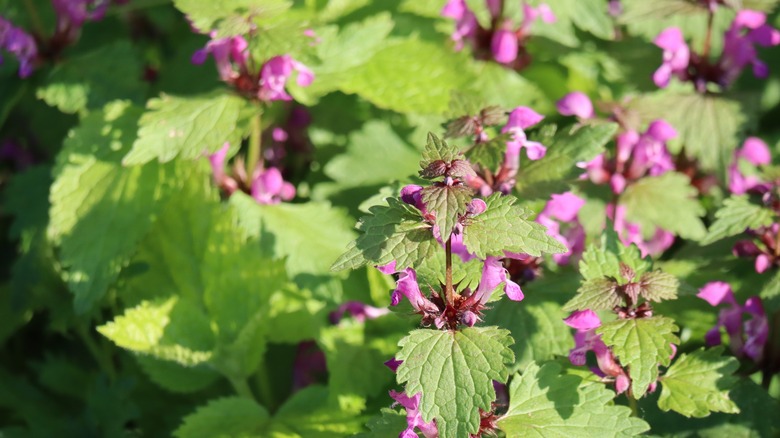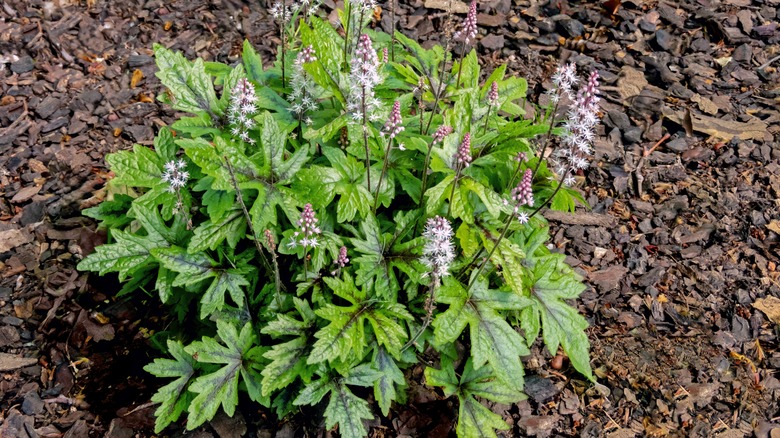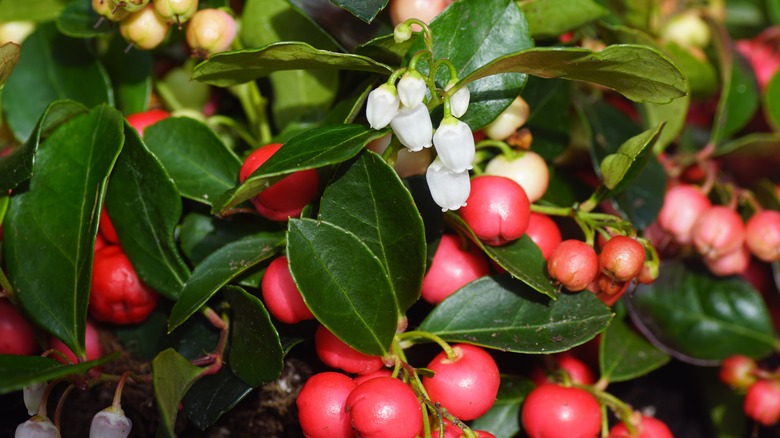Native Alternatives To Spotted Dead Nettle That You Can Add To Your Yard Or Garden
While spotted dead nettle (Lamium maculatum) can make an attractive and low maintenance ground cover for partly shady locations, it is not native to North America and it, like many of its mint family relatives, can be quite aggressive. Fortunately, there are many plants native to North America that fill similar niches, thriving in the same lightly shaded and moist locations dead nettle appreciates. Some of the best options native alternatives include foamflowers (Tiarella cordifolia), bunchberries (Cornus canadensis), Canadian wild ginger (Asarum canadense), American wintergreen (Gaultheria procumbens) and even wild strawberries (Fragaria virginiana).
No matter what specific plants you use, there are many advantages to growing native ground covers. Not only are ground covers helpful for preventing flooding and erosion, but they also deter weeds. Even better, many native ground covers are excellent food sources for native insects, birds, and small mammals. Some are even tasty food sources for people.
Growing foamflowers and Canadian wild ginger
Both foamflowers (also sometimes called false miterwort) and Canadian wild ginger are native to much of Canada and the United States. While foamflowers can thrive in zones 3 through 8, Canadian wild ginger has a slightly smaller range and grows in zones 4 through 6. Both plants can grow in a variety of light conditions, happily enjoying everything from dappled sunlight to deep shade. They also both flourish in moist soil with good drainage.
As they grow well in similar conditions, foamflowers and Canadian wild ginger can easily be paired together in gardens and make excellent options for areas where light levels vary, such as around deciduous trees. Both plants grow to about a foot in height and can slowly spread to fill a garden thanks to their ability to spread via rhizomes. While wild ginger's small flowers are often barely noticeable, they are loved by pollinators. Foamflowers on the other hand are beautiful white flowering plants with delicate spikes of flowers that appeal not only to pollinators like bees and butterflies, but also to people.
Using strawberries, American wintergreen, and bunchberries as ground cover
Flowers and leaves aren't the only things native ground covers can provide though. Some, like wild strawberries, adorable bunchberries, and wintergreen, also provide berries that are not only edible for wildlife, but also people. All three of these species can thrive in partial shade, much like spotted dead nettle, though wild strawberries also grow well in full sun and American wintergreen can flourish in deep shade.
Which of these charming and low growing berries will work best for your yard depends in part on your growing zone. While bunchberries, which thrive in zones 2 through 6, and American wintergreen, which grows in zones 3 through 7, are quite cold hardy, wild strawberries prefer slightly warmer regions, flourishing in zones 5 through 9. Another factor to consider is whether you have hungry deer in your area, as bunchberries are a perfect deer-resistant ground cover. All three berry species enjoy moist and well draining soil, though American wintergreen and wild strawberries can also handle drier conditions on occasion. As none of them grow taller than a foot, these plants can easily be grown in front of or around larger shrubs and trees providing beauty, not only from their vibrant green leaves and red berries, but also their white flowers.


